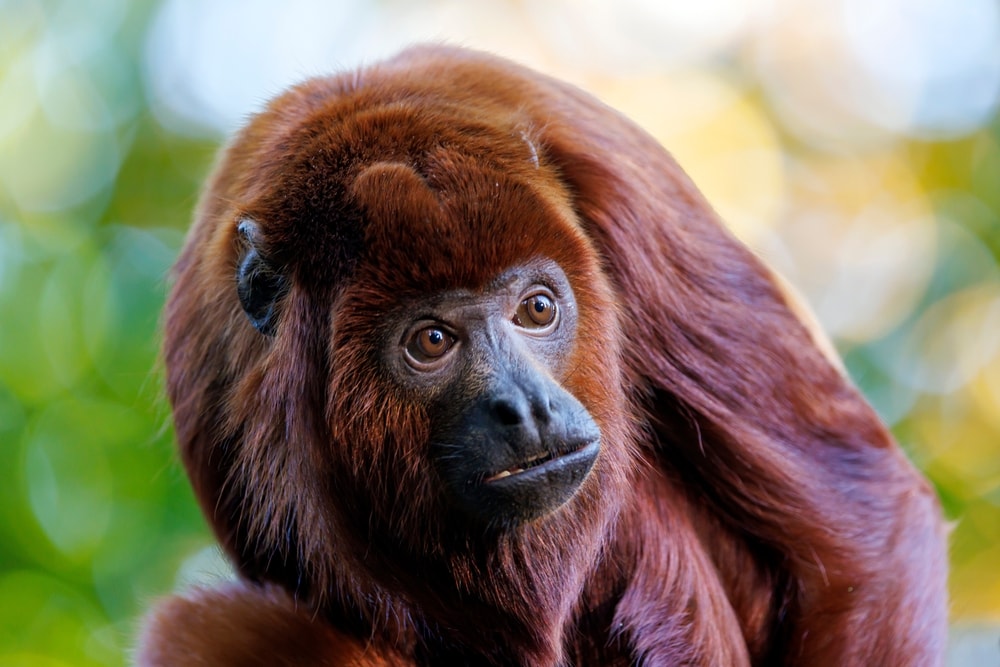Outforia Quicktake: Key Takeaways
- The Colombian red howler monkey is adaptable, thriving in several types of forests and climates within their geographic range in the western Amazon Basin, spanning several South American countries.
- It is notable for its loud howls, which are among the loudest of any primate, used for defining territories and communicating with other groups.
- These monkeys are identifiable by their reddish-brown coat and a strong, flexible prehensile tail.
- Their diet is diverse, primarily consisting of leaves but also includes a variety of other plant-based foods and occasionally small animals.
- Its social structure is based around a polygynous mating system, wherein a dominant male mates with multiple females. Offspring care predominantly falls on the female monkeys.
The Colombian red howler monkey is a fascinating species that lives in the bountiful and biodiverse western Amazon Basin.
These primates are known for their calls, which are among the loudest of any primate, help define their territories and communicate with other troops in their vicinity. However, you’ll later on find out that’s not their only notable feature!
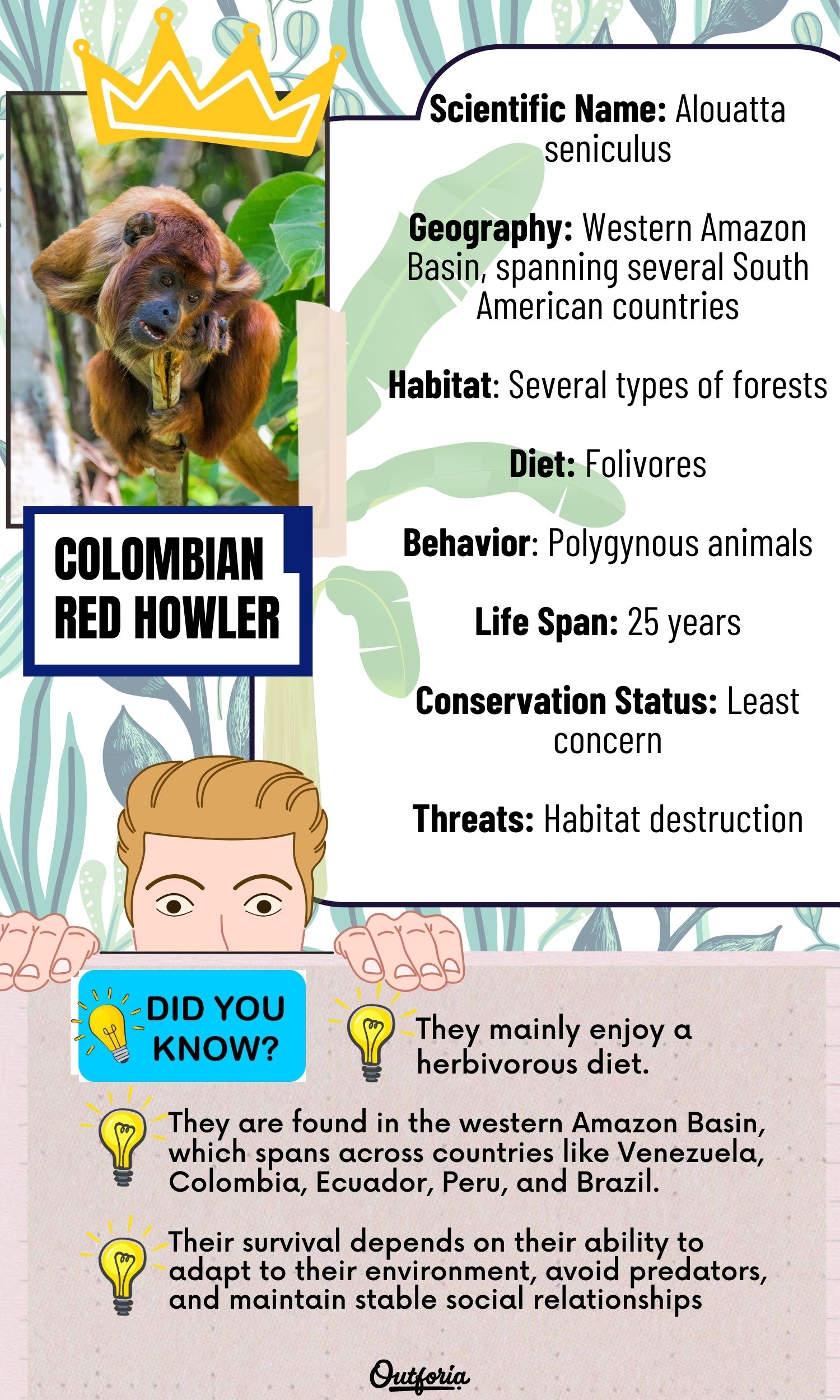
Share This Image On Your Site
<a href="https://outforia.com/colombian-red-howler/"><img style="width:100%;" src="https://outforia.com/wp-content/uploads/2023/10/colombian-red-howler-infographics-10142023.jpg"></a><br>Colombian Red Howler Infographic by <a href="https://outforia.com">Outforia</a>Physical Characteristics
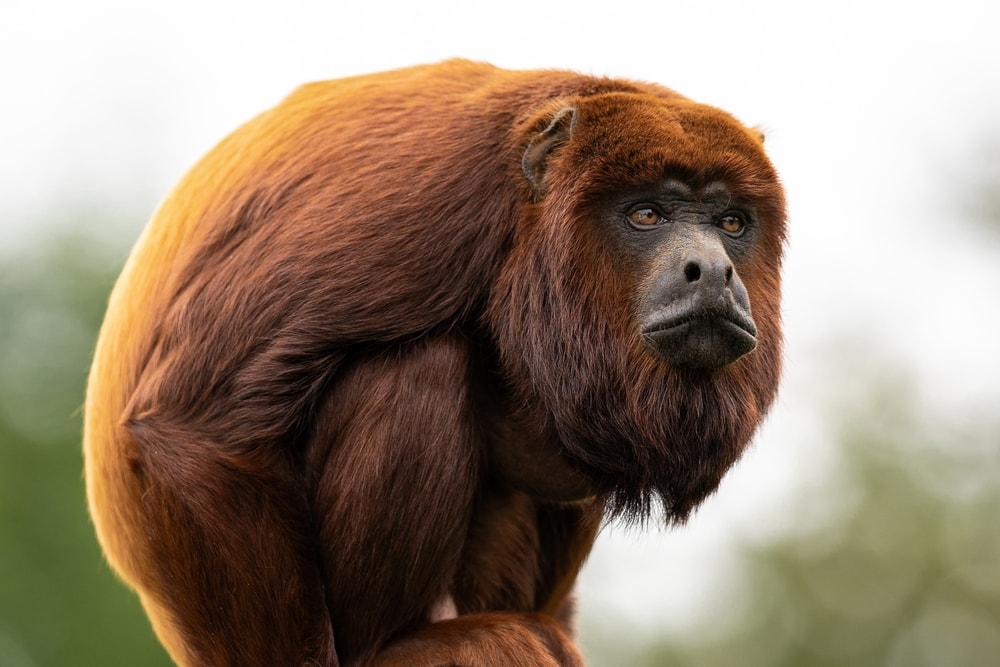
They boast a reddish-brown coat that helps them blend in with the lush Amazon forests.
Besides their striking color, you’ll notice these monkeys have a unique prehensile tail, which is both strong and flexible. This tail, which is almost as long as their body, allows them to swiftly move through trees and maintain their balance.
In terms of size, adult males typically weigh around 16.6 pounds and measure between 19.3 and 28.4 inches (49.0 – 21 cm) in length. Adult females are usually smaller, with an average weight of 13.9 pounds (6.30 kg) and a length between 18 and 22.4 inches (46 – 56.9 cm).
It has a characteristic feature that truly sets it apart from other monkey species: its loud, resonating howl. Males use their large, specialized throat sacs to produce these powerful calls, which can be heard from up to 3 miles (4.8 km) away.
This vocalization is an essential part of their social interactions, allowing them to assert dominance and communicate with other members of their group.
Natural Habitat
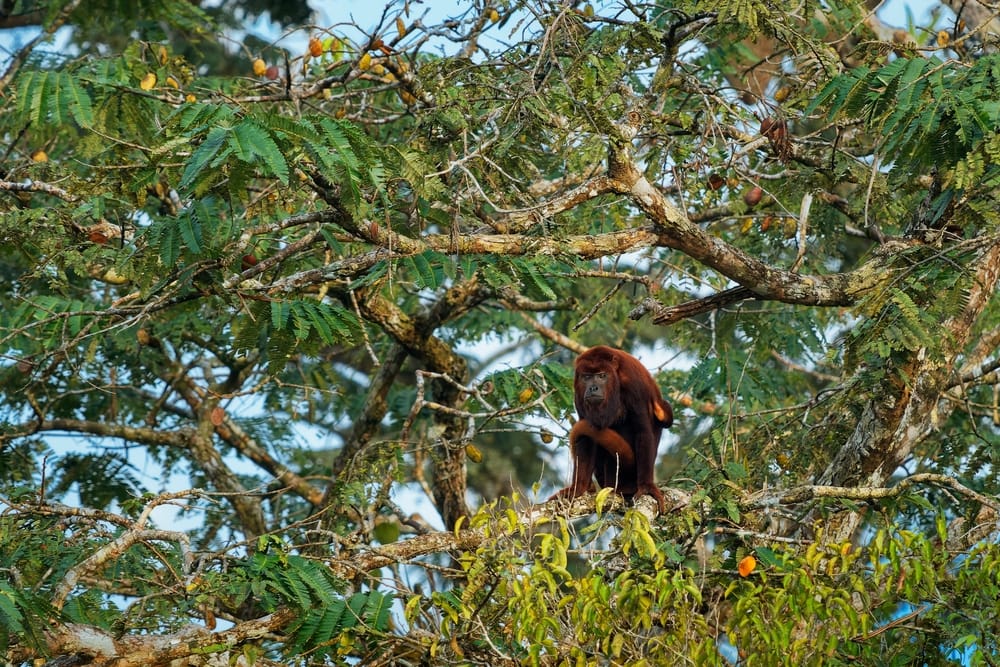
This New World monkey resides predominantly in the western Amazon Basin.
Its distribution spans several South American countries, such as Venezuela, Colombia, Ecuador, Peru, and Brazil.
Living in the lush rainforests of South America, Colombian Red Howlers roam the canopy levels, where they benefit from the diverse flora and fauna offered by these ecosystems.
Biome and Climate Zones
This species is notably adaptable, thriving in several types of forests within its geographic range. These forests include primary lowland rainforest, dry deciduous forest, Andean cloud forest, gallery forest, mangrove swamps, and várzea forest.
This adaptability allows them to survive in diverse climate zones, ranging from the warm and wet tropics near the equator to the cooler and moister Andean cloud forests high in the mountains.
The variety of habitats inhabited by the species is a testament to their flexibility and resiliency in the face of varying environmental conditions.
You May Also Like: All The 26 Different Types Of Apes: Pictures, Classification And Chart
Lifestyle and Social Behavior
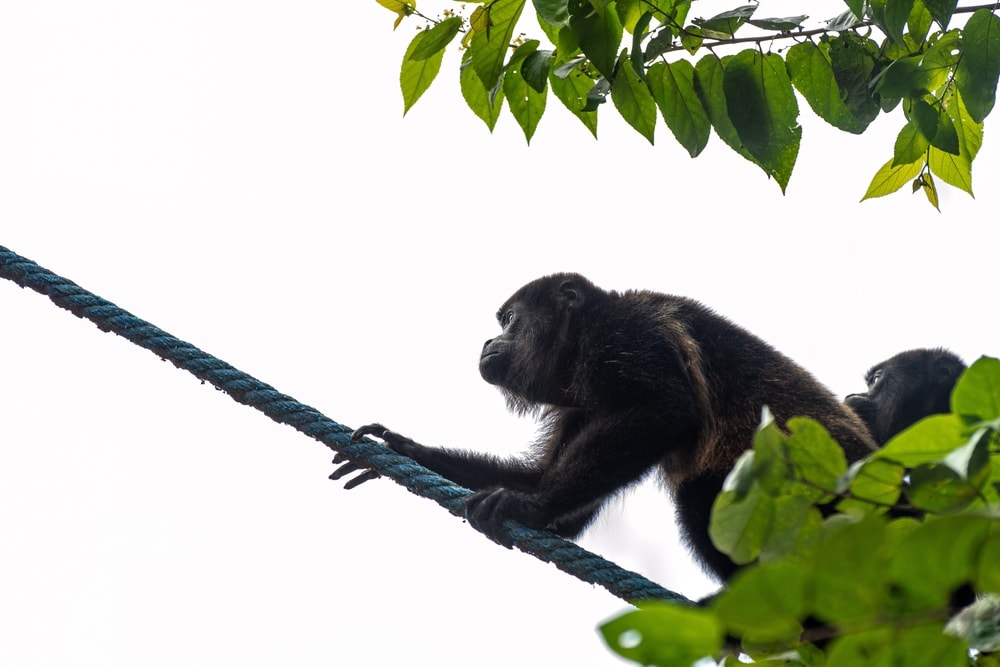
These howlers are most active in the early morning, utilizing the dawn hours for foraging and feeding.
Their diet primarily consists of leaves (50%) and fruit, but they also consume buds, flowers, seeds, moss, twigs, stems, and soil from termite hills. They have a specialized feeding spot that they utilize for their daily consumption.
The home range for groups of Colombian red howlers is extensive, varying from 30 to 100 hectares (358,797 to 1,195,990 sq yd).
They mark and defend their territories through their distinctive howling, which can be heard up to 3.1 mi (5 km) away. This howling serves as a means of communication and establishes dominance among groups.
Social Interactions
Their social interactions and trophic strategy are key aspects of their lifestyle.
They live in groups of varying sizes, typically containing one adult male who leads the group and cares for the well-being of the other members. Due to this social structure, fighting among males for group leadership is common.
Their howling plays an essential role in their interactions with other red howler groups.
This vocal communication not only defines their territorial boundaries but also alerts neighboring groups of their presence, which is crucial for maintaining balance within their community.
Diet and Nutrition
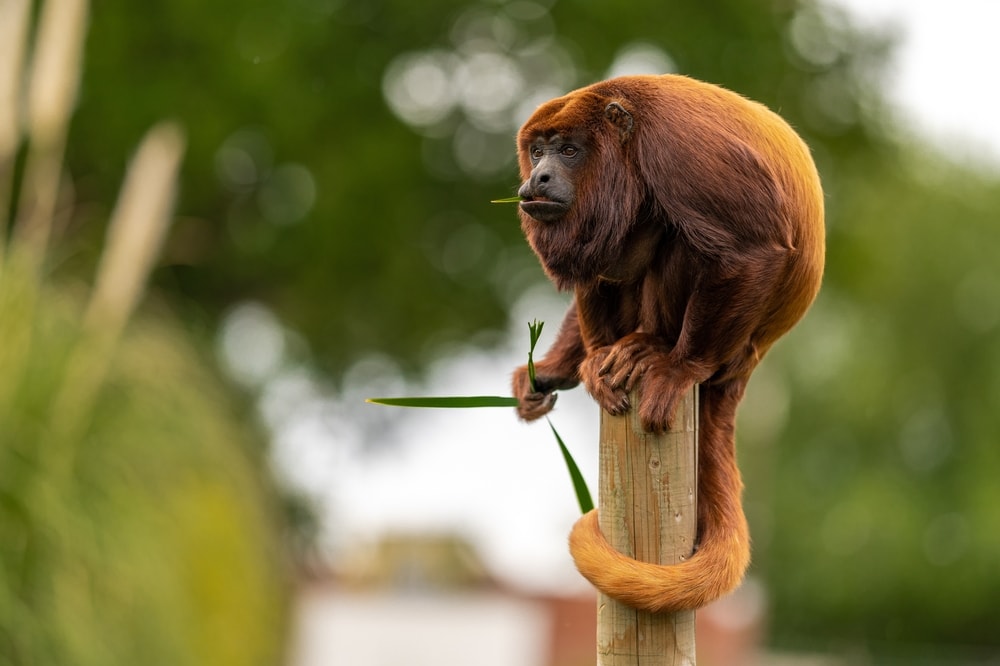
As folivores, the core of their diet consists of leaves, which are a nutrient-rich food source.
However, their nutritional intake doesn’t stop there. To balance their diet, they also consume a variety of other plant-based foods, including fruits, seeds, flowers, nuts, and even small animals occasionally.
While foraging, you’ll notice that they have a special affinity for leaves. Leaves make up a significant portion of their diet due to their vital role in providing the energy and nutrients needed for growth and development.
In fact, leaves are so crucial that howlers cannot survive without them for more than a week. The high sugar content found in fruits and flowers is an additional benefit that aids in providing energy and vitality to these animals.
The Colombian red howler’s dentition is perfectly adapted to their diet. Their robust teeth, particularly the sharp molars, allow them to efficiently grind and process the fibrous leaves they consume.
Moreover, their dentition also enables them to break down flowers, seeds, and nuts, extracting the essential nutrients as they go.
Another interesting aspect of their diet is the way they utilize their hindgut for digestion. The hindgut comprises a large percentage of the Colombian red howler’s gastrointestinal tract and contains essential microflora.
This adaptation allows them to properly process the leaves and plant matter they consume, extracting maximum nutrients and energy.
Colombian Red Howler Reproduction
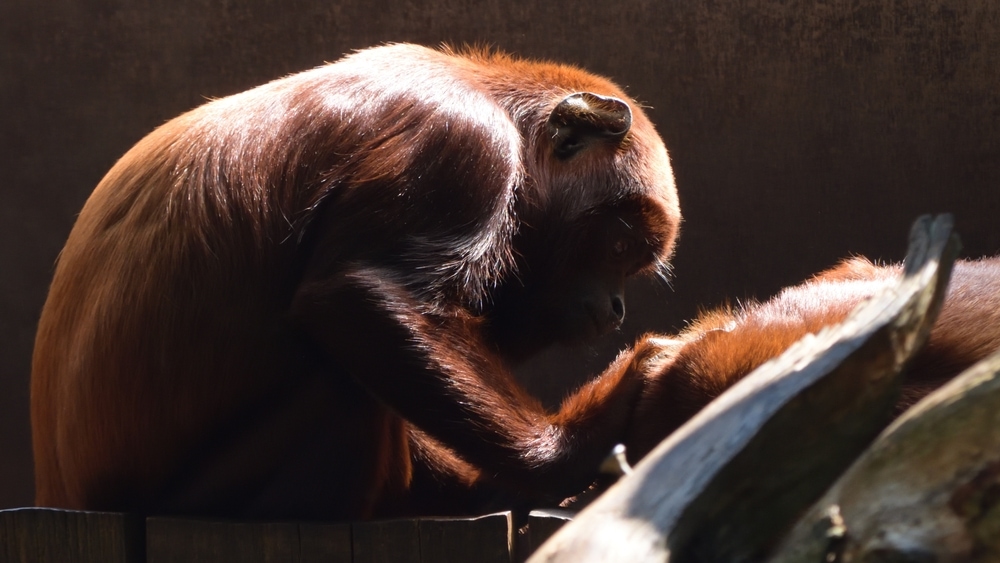
In this species, the mating system is primarily polygynous, meaning that a single male mates with multiple females.
During the mating season, males may compete for access to females, and the dominant males have a higher chance of reproducing.
Females usually give birth to one infant after a gestation period of around 6 months. Once born, the infant clings to its mother’s back for the first few months of its life.
As it grows and gains strength, the juvenile will start to explore its surroundings, eventually leaving its mother’s side.
Lifespan and Longevity
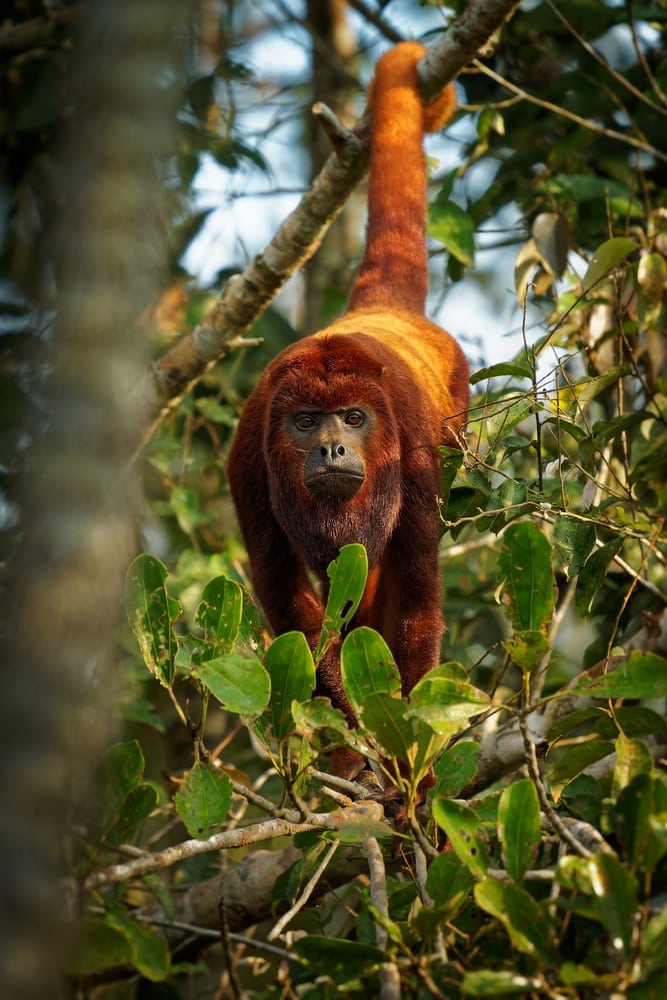
The lifespan of the Colombian Red Howler is around 25 years. Their survival is highly dependent on their habitat, and factors such as predation and habitat loss can impact their life expectancy.
Sexual maturity in this species is reached at different ages for males and females. Females generally reach sexual maturity around 48 months, while males reach maturity at 60 months.
This period is crucial for their reproductive success, as it determines whether they will be able to successfully mate and produce offspring.
Population and Distribution of Colombian Red Howler
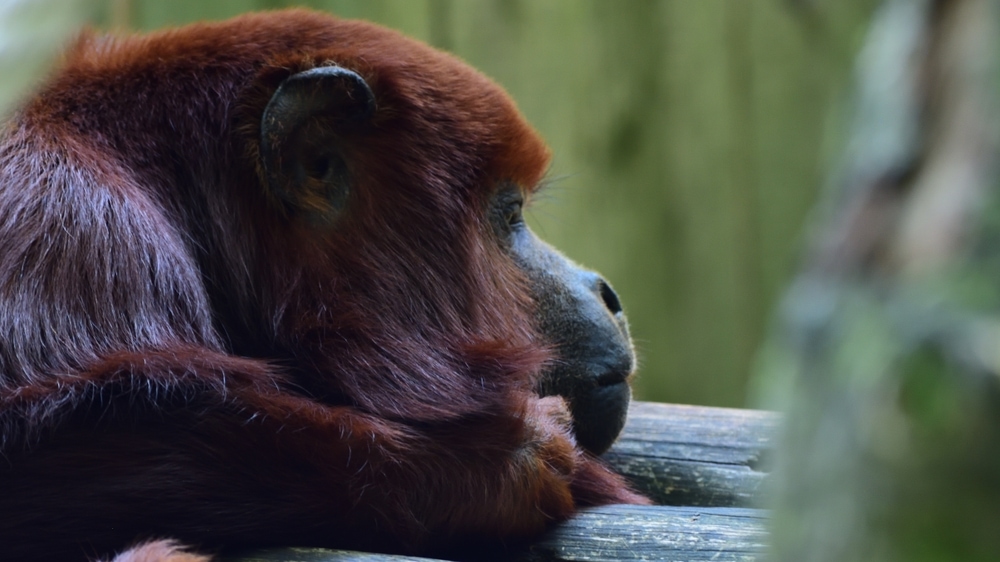
They can be found throughout the Western Amazon Basin in South America, with populations recorded in Brazil, Colombia, Ecuador, Peru, Trinidad and Tobago, and Venezuela.
You might have a higher chance of spotting them in Venezuela, especially since the country observed a significant population increase from 1969 to 1999.
However, keep in mind that their range overlaps extensively with that of other howler monkey subspecies.
Population Threats and Conservation Status
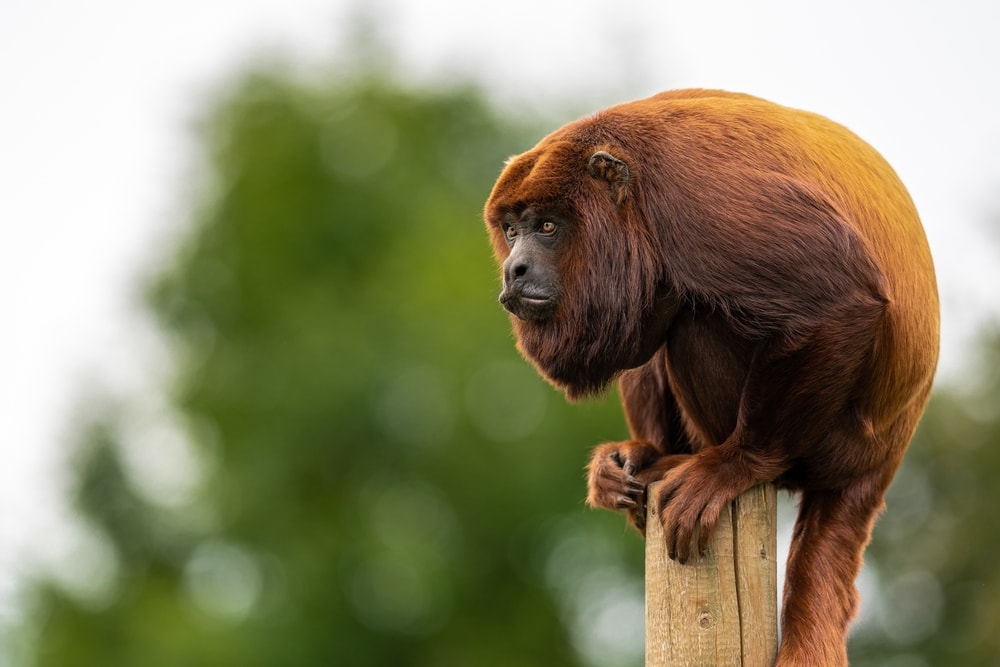
The IUCN lists the species as “Least Concern” on the Red List of Threatened Species. However, don’t be misled by this classification; the Colombian Red Howler still requires attention and conservation efforts to ensure its survival.
One significant threat to their population is habitat loss. As the natural habitats of these monkeys are continuously destroyed by deforestation and human encroachment, the stakes for their survival become higher.
Another threat they face is being hunted for various purposes, including trade.
You May Also Like: Top 21 Animals With Long Tails Across The World
Importance of the Colombian Red Howler
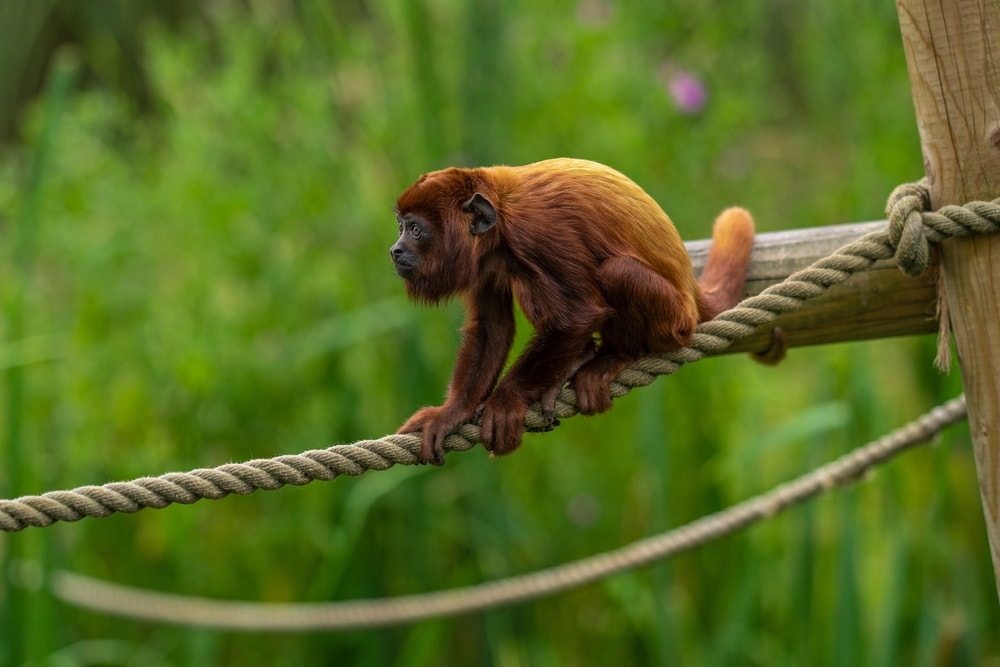
An essential part of its ecosystem, it plays a vital role in the healthy functioning of the forest it inhabits.
One of the remarkable adaptation features of howler monkeys is the hyoid bone, which allows them to release a loud, distinctive sound. These vocalizations can be heard for miles and help in maintaining their social structure and keeping other howler groups away.
As members of the ecosystem, they contribute to seed dispersal. They consume fruits along with leaves, and the seeds are dispersed as the monkeys travel throughout the forest.
By carrying seeds to new locations, they help to maintain the plant diversity of their habitats. In turn, these plants support diverse animal populations.
Another significant contribution of these monkeys to their ecosystem is their role as prey for various predators. The howler monkeys offer a valuable food source for birds of prey, jaguars, and various other predators.
Colombian Red Howler Subspecies
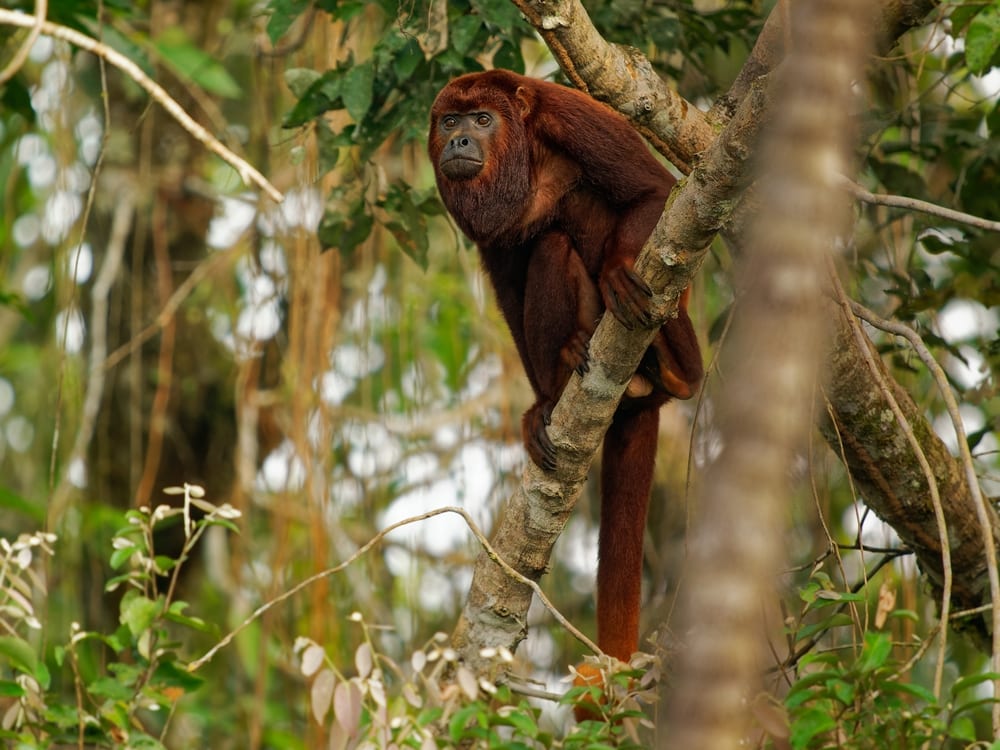
One of the notable subspecies in the Alouatta seniculus family is the Alouatta juara.
When dealing with subspecies, it’s common for scientists to observe subtle variations in physical appearance, behavior, and habitat preferences within a larger species group.
In the case of Alouatta juara, this subspecies is notable for its distinct coloration and distribution compared to the primary Colombian Red Howler species.
The Alouatta juara subspecies can be identified by its darker fur and slightly different vocalization pattern compared to other Alouatta seniculus members.
Habitat preferences can also help set apart the different subspecies of the Colombian Red Howler. While it’s always important to keep in mind that there’s a certain degree of overlap in habitat for subspecies within the same species, distinctions can be made.
For instance, some subspecies may predominantly occupy lowland tropical forests, while others may venture out into higher altitudes or show a preference for specific vegetation types, such as palm swamps or riverine forests.
You May Also Like: How Long Do Squirrels Live? Longer Than You’d Think
Colombian Red Howler Frequently Asked Questions
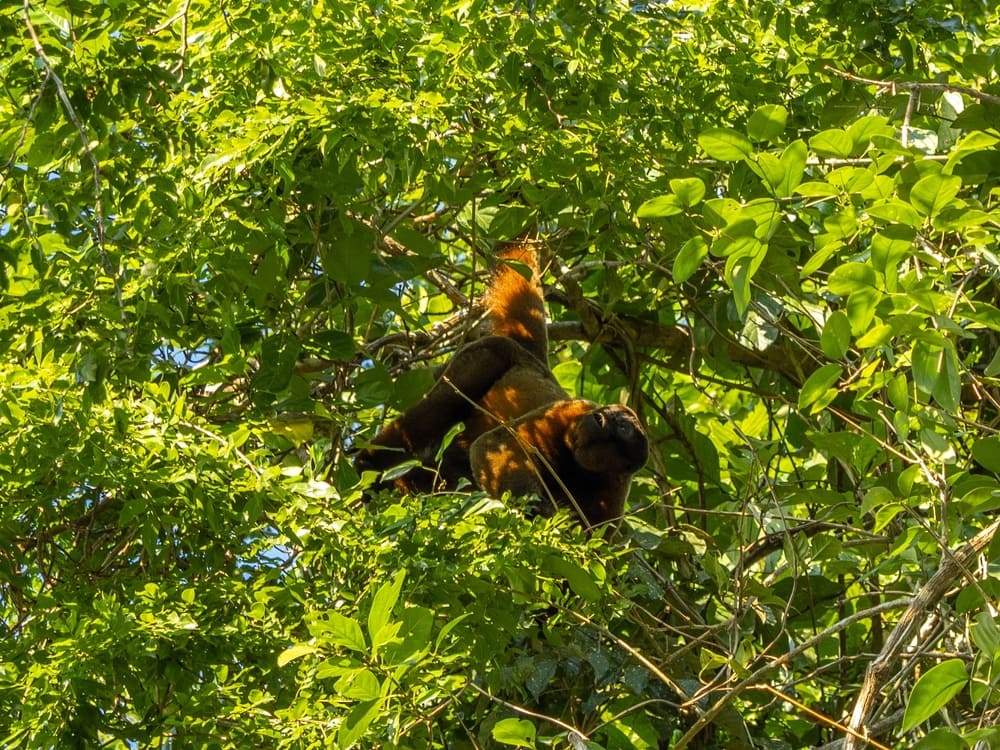
What is the diet of Colombian red howler monkeys?
They mainly enjoy a herbivorous diet. They mostly eat leaves, flowers, and fruits found in the canopy of their habitat.
What is the habitat of the Colombian red howler?
They are found in the western Amazon Basin, which spans across countries like Venezuela, Colombia, Ecuador, Peru, and Brazil. They live primarily in the dense rainforest canopies, where they find their food and shelter.
What are the main predators of Colombian red howlers?
They face several predators in the wild, including large birds of prey, such as the harpy eagle, and other mammals, like jaguars and ocelots.
What is the lifespan of a Colombian red howler monkey?
In the wild, the species generally has a lifespan of about 25 years. Their survival depends on their ability to adapt to their environment, avoid predators, and maintain stable social relationships with the members of their group.
Are Colombian red howler monkeys endangered?
While they aren’t currently classified as endangered, their population status is unknown, and they face increasing threats from habitat loss due to deforestation and illegal logging in the Amazon rainforest.



